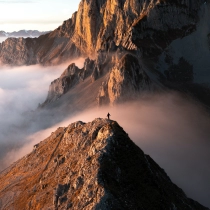








bouldering





I usually climb alone due to my working hours, but later on during the week I discuss the new routes in the gym with friends, and usually what happens is that I find out that I had no idea what the intended beta was, and that I completely broke the intended beta. Sometimes I make it easier, other times I make it much more difficult than it's supposed to be.
Usually my friends are in the gym when the routes are being set, so they know the beta, but I am not, so I almost never know the intended beta, and since I climb alone, I usually make it up as I climb. So, it happens pretty often.
Climbing on the moon board really helped with my sit starts, something that I was fairly bad at. I just couldn't get myself off the ground.
After dedicating a few months to climbing on the moon board, besides getting stronger in my core and grip strength, sit starts became much easier for me, since, at least in my gym, the moon board sit starts are much harder than the regular routes sit starts.
Besides that, I believe that supplementing climbing with weight training can help a lot with it.


It took me 6 months to do my first v6. I think I remember every part of that route (it was almost 3 years ago), and the feeling I had when I was about to match the top hold.
My goal was to go up a grade every month. That stopped at that v6, though.
Since then, I have moved to a different gym, and in this gym, the grades are much softer. There are new climbers that can do many of the v6 routes, and they have been climbing for just a few months. So it really depends on the route setters, and if they are soft grades or not.



